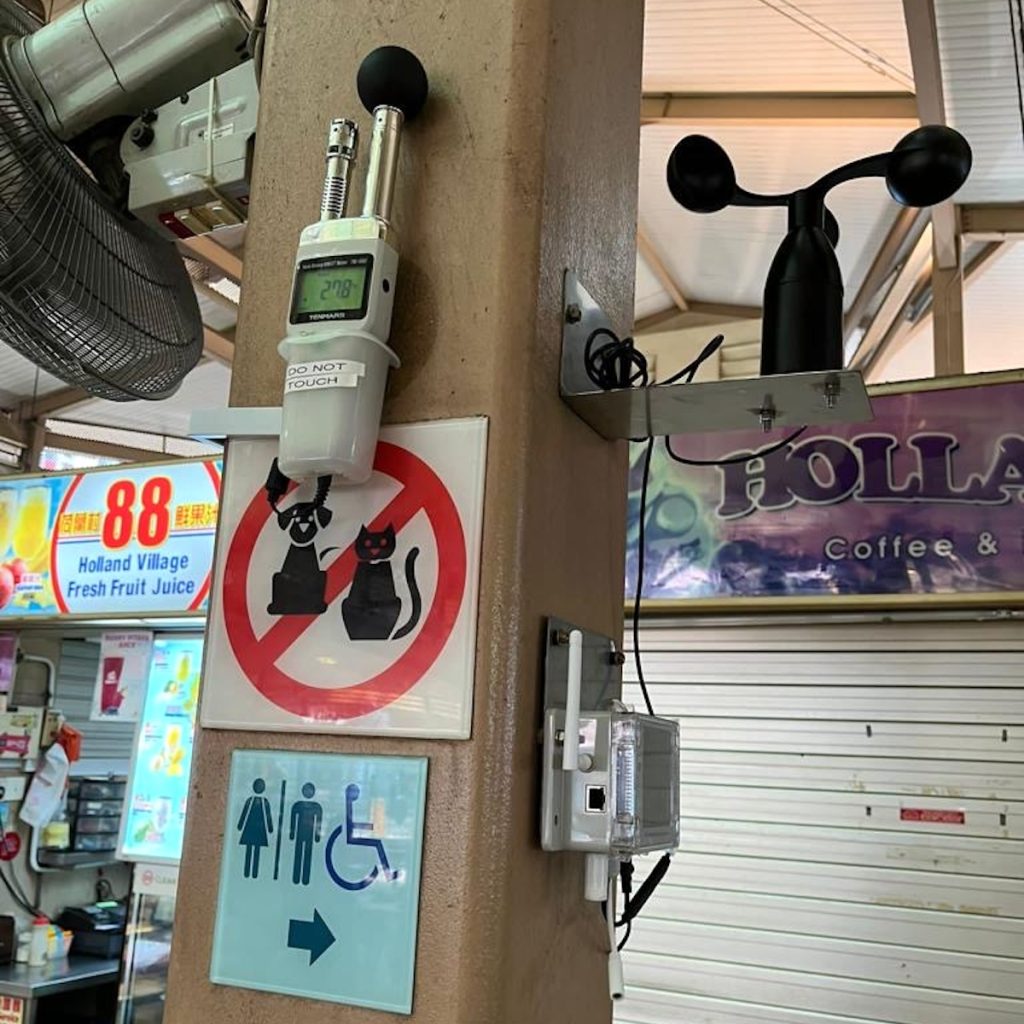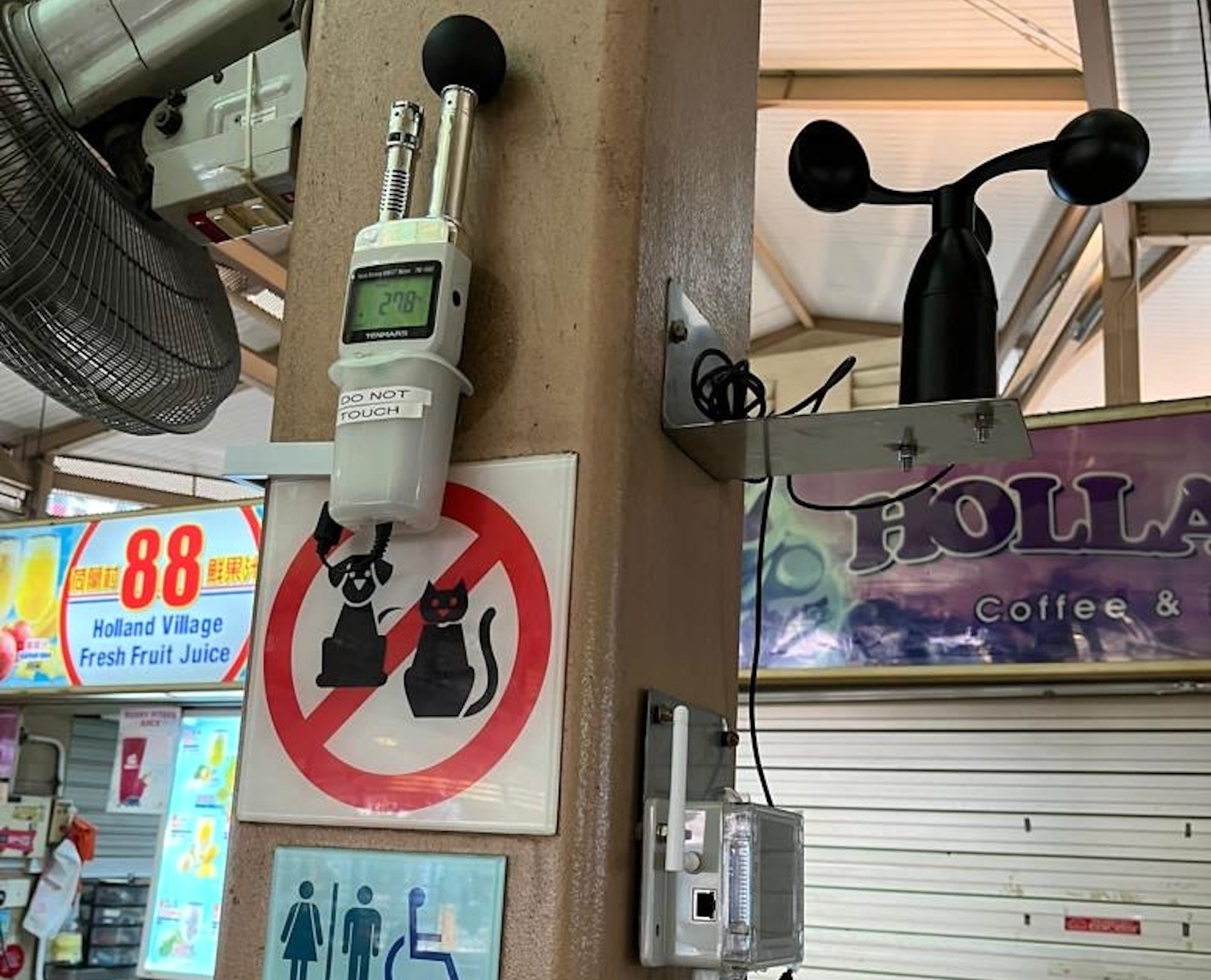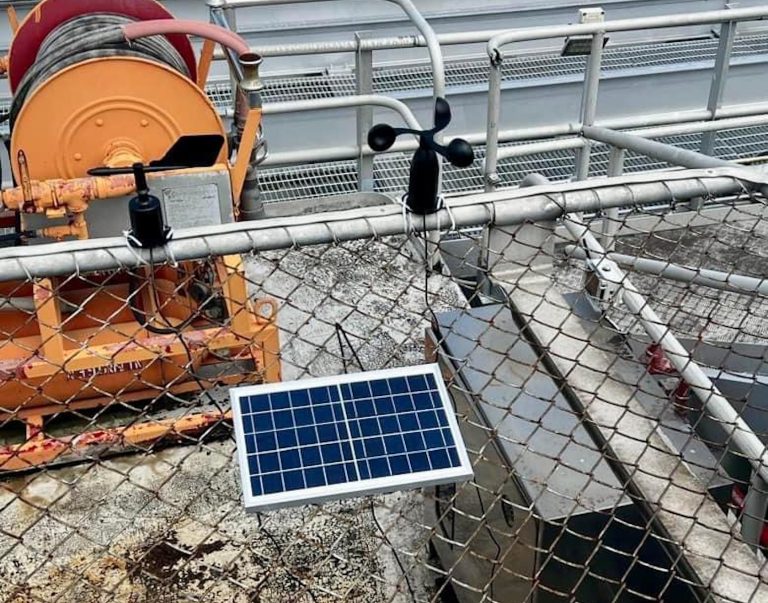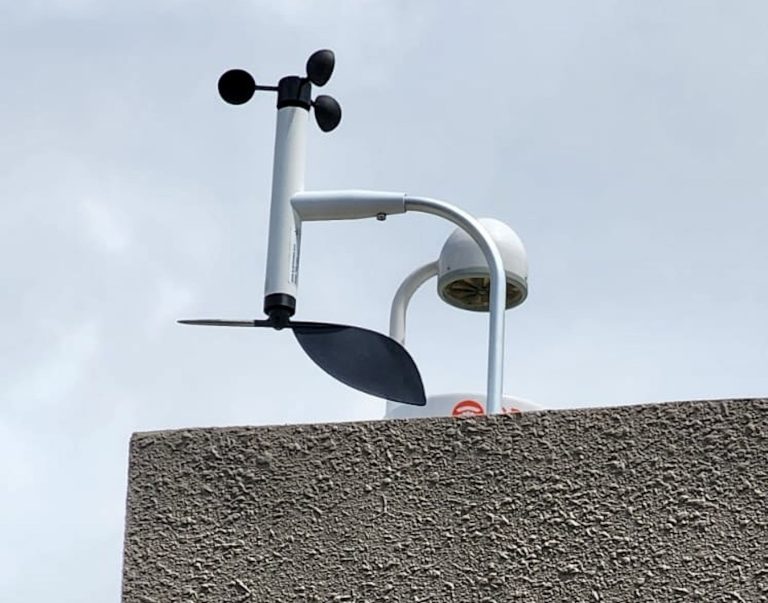
Singapore’s hawker centers are vibrant hubs of community life, but the tropical climate can make dining uncomfortable, especially during the hottest parts of the day. High indoor heat stress, exacerbated by solar radiation, can significantly impact both diners and hawkers. Recently, new roof paints claiming to reduce heat radiation have been introduced. To effectively measure the impact of these paints and ensure a comfortable environment, accurate and affordable monitoring of indoor heat stress, airflow, and thermal comfort is crucial. This post explores a cost-effective solution combining the Tenmars TM-188D Heat Stress WBGT Meter with Datalogger and the UbiBot GS1-AETH1RS Industrial-Grade WIFI RJ45 Temperature Humidity Light Data Logger with Wind Speed Probe.
Understanding Indoor Heat Stress
Indoor heat stress is a complex issue, influenced by temperature, humidity, radiant heat, airflow, and personal factors. High levels of indoor heat stress can lead to discomfort, reduced productivity, and even health problems. Accurate measurement is the first step towards effective mitigation. The Wet Bulb Globe Temperature (WBGT) index provides a comprehensive measure of indoor heat stress, considering all the relevant environmental factors. This makes it a more reliable indicator than simply measuring air temperature.
The Tenmars TM-188D: Your WBGT and Heat Stress Companion
The Tenmars TM-188D Heat Stress WBGT Meter is a portable and user-friendly device that provides accurate WBGT readings. It measures dry bulb temperature, wet bulb temperature, globe temperature (radiant heat), and humidity, allowing for precise calculation of the WBGT index. Its built-in datalogger allows for continuous monitoring and recording of data, enabling you to track changes in heat stress levels over time. This is vital for assessing the effectiveness of heat mitigation strategies like the new roof paints.
UbiBot GS1-AETH1RS: Comprehensive Environmental Monitoring with Wind Speed
While the Tenmars TM-188D focuses on heat stress, the UbiBot GS1-AETH1RS adds another crucial dimension: airflow. This industrial-grade data logger not only measures temperature, humidity, and light but also includes a wind speed probe. Airflow plays a significant role in thermal comfort, as it helps to dissipate heat and create a more comfortable environment. The UbiBot GS1-AETH1RS’s Wi-Fi connectivity allows for remote monitoring and data access, making it easy to track conditions in real-time. Its robust design ensures reliable performance in demanding environments like hawker centers.
Combining the Devices for a Complete Picture
By combining the Tenmars TM-188D and the UbiBot GS1-AETH1RS, you gain a complete understanding of the indoor thermal environment. The TM-188D provides the essential WBGT and heat stress data, while the GS1-AETH1RS adds crucial information about temperature, humidity, light, and, most importantly, wind speed. This combined data set allows for a thorough analysis of the factors contributing to indoor heat stress and thermal discomfort.
Assessing the Effectiveness of New Roof Paints
With these tools, you can rigorously evaluate the impact of the new roof paints. By collecting data before and after the application of the paint, you can quantify the reduction in radiant heat and overall indoor heat stress. The data will also reveal how the paints affect other environmental factors like temperature and humidity. Furthermore, the wind speed data from the UbiBot GS1-AETH1RS will help understand how airflow interacts with the reduced radiant heat, contributing to overall thermal comfort.
Affordable and Effective Solution
This combination of devices offers an affordable and effective solution for measuring indoor heat stress and thermal comfort in Singapore hawker centers. The data collected will empower stakeholders to make informed decisions about heat mitigation strategies, ensuring a more comfortable dining experience for patrons and a healthier working environment for hawkers. By understanding the impact of interventions like new roof paints, hawker centers can optimize their infrastructure and create a more pleasant and sustainable environment for everyone. Investing in these measurement tools is a crucial step towards creating more comfortable and welcoming spaces in the heart of Singapore’s culinary scene. This data-driven approach will not only improve the dining experience but also contribute to the long-term well-being of the hawker community.



